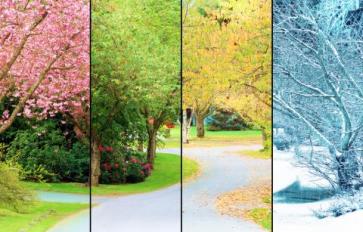
Foraging For Beginners Pt. 1 went over just a few of the many wild foods available throughout the United States. Part 2 will cover some of the winter edibles available.
Winter foraging is definitely not going to bring in the bounty that you can bring in throughout all of the other 3 seasons. This is one of the biggest reasons it is important to always harvest and forage enough to be able to preserve some for the winter. You will, however, be able to find some things (depending on your location).
Yellow Pond Lily ( Nuphar advena)

This water lily grows mostly on the East Coast up through the Mid-West. If the name hasn’t given it away already, you can find the yellow pond lily growing in ponds, lakes, streams, and swamps. The little yellow flower holds a seed pod full of edible seeds and if you follow the vine trail from the lily down into the water with your feet you can loosen the roots with your toes just like with the Wapato.
The seeds should be harvested in the late summer through early winter. All you have to do is let the fruits air-dry so they are easy to separate and collect the seeds. Once you have the seeds, soak them in a bucket of water for 4-6 hours: the good seeds sink and the bad ones float. Dry the seeds out in the sun or in the oven store. You can pop the seeds like popcorn for a tasty little snack or winnow the seeds’ outer shells off and grind them into a meal. The seed meal can be used in recipes that call for cornmeal. The roots have to be peeled and boiled 2 or 3 times in order to leach out some of the tannins. Once you have leached the roots you can serve them just like you would a potato.
Staghorn Sumac (Rhus typhina)

Staghorn Sumac grows throughout the United States in the woodlands, fence rows, and beside creeks and streams. This plant should not be confused with its relative Poison Sumac, poison sumac berries are white whereas the Staghorn are red and kind of fuzzy. People who are highly allergic to poison sumac should be careful when trying staghorn for the first time as it can cause some irritation for some. The Staghorn also has a couple of other relatives that are not poisonous: the smooth sumac, the Squaw-Bush, and lemonade berry. The berries can be used to make a tasty drink or jelly. If you harvest the berries in the summer or fall, they will have a strong lemony taste, but when harvested in the winter they are less potent.
To make a sumac tea or berry-ade, steep the berries in water that is close to boiling for about 15-20 minutes - 1 cup of berries for every quart of water. Strain through a cheesecloth and sweeten. The drink is very similar to a lemonade and can even be mixed with lemonade for an extra kick. There is some dispute when it comes to the method of making the juice – some say that doing a long cold steep is better than the close to boiling method, claiming that it tastes better and stronger as a cold brew.
Squashberry (Viburm edule)

The squashberry is also known as the Mooseberry, American Cranberry, and the low-bush cranberry. These berries grow way up north in the colder regions of the U.S. Look for these sour, tart berries close to streams, wet thickets, ponds etc. The dark red fruits are used to make juice and jelly. They can be picked summer through winter, but they are less sour in the winter. There are no known poisonous look-a-likes but there are several edible species, one of them being the Highbush Cranberry and the American Cranberry.
Sugar Maple

Aside from being such a beautiful tre,e these big guys produce such sweet delectable maple syrup. If you don’t have any maples in your area, look for Yellow birch, you can tap them just like maple but the syrup isn’t as sweet but it is good. The syrup or sap can be harvested from spring through winter, but to get a good flow of syrup the trees require a good freeze at night and warm weather during the day.
When you have identified your maple tree, drill a hole that is about the 7/16-in circumference and 2-3 inches deep into the trunk. Drive a spike in order to hold your bucket and let nature take its course. It is a slow going process sometimes. Let your buckets fill up, and when you have around 10-20 gallons of the sap you are ready to start cooking it down into sweet goodness.
As I mentioned previously, your location makes a big difference when it comes to foraging wild foods. This is because of the different environments and weather. One foraging in Florida or California will find more options during the winter than someone in the Midwest. I suggest picking up a foraging pocket guide for your area in order to become familiar with your area.
Always remember to make sure you are identifying the plants correctly before eating them, as some plants can have poisonous lookalikes.
Happy Foraging!








